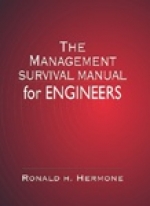Tab Article
Discusses managing technology within the organization, managing the engineering department, and managing engineering projects - both the technical approach through various PERT/CPM as well as personnel aspects
Bridges the world of science and the working organization
Outlines how to maximize a technical education in engineering
Provides essential information for developing a critical path
Identifies rules for obtaining help from others, principles for choosing the proper leadership style, methods for developing a team, and procedures for getting things done without established authority
Although engineers receive an outstanding technical education, their success in today's organization demands knowledge of how to put that education to work. The Management Survival Manual for Engineers provides this information, creating the bridge between the world of science and the working organization. The text discusses the management of technology within the organization, the management of the engineering department, and the management of engineering projects through technical approaches and personnel aspects.
The Management Survival Manual for Engineers introduces the engineer to basic management of engineering, encouraging essential leadership and managerial philosophies. The book acts as a primary resource for engineers moving into managerial areas as opposed to technological ones. It addresses a multitude of topics, enabling the reader to grasp general concepts before addressing more specific concepts.
Topics include:
o Examining the inter-organizational behavior, procedures, and policies required to work in formal organizations.
o Identifying the required knowledge of leadership
o Outlining the principles for effective communication skills
o Determining the responsibilities of the organization and engineering manager for preparing the new engineer entering the organization
o Introducing how engineering functions in the organization
o Forming a basic understanding for project management
o Describing the transition from new engineer to supervisor
The Management Survival Manual for Engineers emphasizes an understanding of people, the organization, and management as opposed to technology - serving engineers entering the engineering field as well as those engineers moving into project management for the first time.


